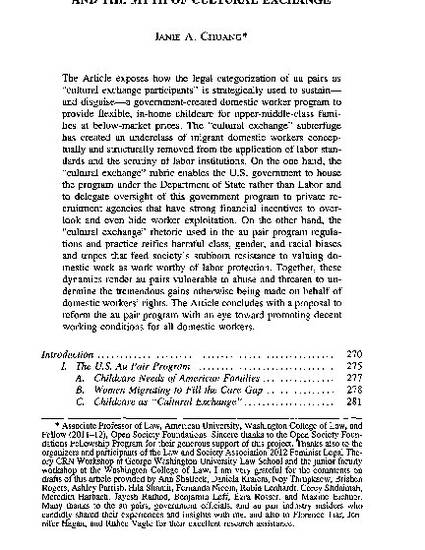
Article
The U.S. Au Pair Program
Harvard Journal of Law & Gender
(2013)
Abstract
The Article exposes how the legal categorization of au pairs as "cultural exchange participants" is strategically used to sustain- and disguise-a government-created domestic worker program to provide flexible, in-home childcare for upper-middle-class families at below-market prices. The "cultural exchange" subterfuge has created an underclass of migrant domestic workers conceptually and structurally removed from the application of labor standards and the scrutiny of labor institutions. On the one hand, the "cultural exchange" rubric enables the U.S. government to house the program under the Department of State rather than Labor and to delegate oversight of this government program to private recruitment agencies that have strong financial incentives to over- look and even hide worker exploitation. On the other hand, the "cultural exchange" rhetoric used in the au pair program regulations and practice reifies harmful class, gender, and racial biases and tropes that feed society's stubborn resistance to valuing domestic work as work worthy of labor protection. Together, these dynamics render au pairs vulnerable to abuse and threaten to undermine the tremendous gains otherwise being made on behalf of domestic workers' rights. The Article concludes with a proposal to reform the au pair program with an eye toward promoting decent working conditions for all domestic workers.
Keywords
- au pair,
- Department of State,
- cultural exchange,
- abuse,
- working conditions,
- exploitation
Disciplines
Publication Date
2013
Citation Information
Janie A Chuang. "The U.S. Au Pair Program" Harvard Journal of Law & Gender Vol. 36 (2013) p. 269 Available at: http://works.bepress.com/janie_chuang/17/
